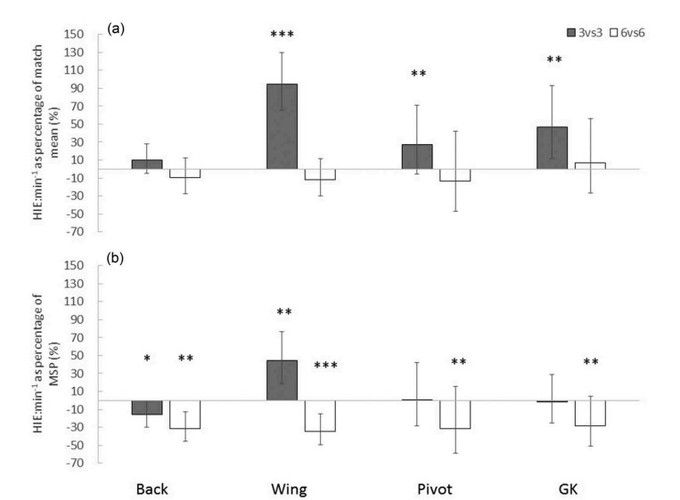Abstract
Game-based training drills are popular in team sports. This study compared two game-based training conditions and official matches in team handball. Thirty-one women players wore inertial measurement units in five training sessions and five official matches. In training, 3vs3 and 6vs6 game-based training conditions were performed with a 5-min duration. PlayerLoad™ and high-intensity events (HIEs; >2.5 m · s-1) were extracted from the raw data. Data were analysed using magnitude-based inferences and reported with effect sizes (ESs). PlayerLoad™ · min-1 from all positions combined was 11.37 ± 0.49 (mean ± 90% confidence limits) and 9.71 ± 0.3 for the 3vs3 and 6vs6 conditions, respectively. Backs (ES 1.63), wings (ES 1.91), and pivots (ES 1.58) had greater PlayerLoad™ in 3vs3 than 6vs6. Substantially greater HIE · min-1 in 3vs3 occurred for all positions. There was substantially greater PlayerLoad™ · min-1 in 3vs3 and 6vs6 than match play for backs, wings, and pivots. Wings (ES 1.95), pivots (ES 0.70), and goalkeeper (ES 1.13) had substantially greater HIE · min-1 in 3vs3 than match play. This study shows greater PlayerLoad™ and HIE in 3vs3 than 6vs6. Both game-based training conditions investigated in this study provide an overload in overall PlayerLoad™; however, additional exercises might be needed to overload HIE, especially for backs and pivots
